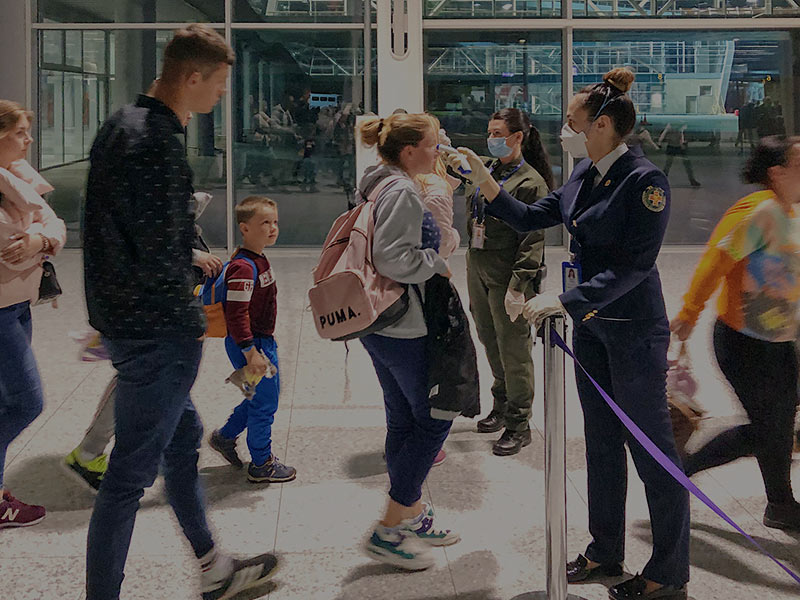
Welcome to your new life online. Although the promise of the virtual world has been touted for many years now, COVID-19 has compelled employers, educational institutions, and others to abruptly embrace a shift to the virtual. This will prove advantageous to some and deeply problematic for others. Like many other changes wrought by COVID-19, it will further exacerbate inequality.
What’s New?
The COVID-19 crisis has abruptly shifted many of our most important daily activities online since work, education, shopping, and recreation have had to adapt to shutdowns and social distancing guidelines. Many large employers have instituted indefinite remote work policies or are experimenting with more flexible working hours and locations, at least for workers who are not deemed “essential.” For well-paid professionals with the means to work comfortably from home, the increased flexibility may prove attractive, even if virtual interactions leave much to be desired. For many others, working remotely is untenable due to space constraints, lack of access to the proper technology, or other limitations.
Meanwhile, educational institutions, teachers, parents, and students are scrambling to figure out how to make virtual learning work as schools struggle to reopen (and stay open) amidst the pandemic. For families of primary and secondary school students, this imposes further requirements for access to space and technology that often clash directly with the realities of parents working from home. A shift to remote education also threatens the financial viability of private universities that rely heavily on the value of a physical campus and the in-person experience. Although a shift to a more virtual model might help democratize access to education over the longer-term, it also raises major concerns about educational quality and social development.
For those with the means and technological access to take advantage of a shift online, the changes may herald increased flexibility and access. Job seekers may no longer be constrained by the businesses located where they live. Students may ultimately gain access to instruction that would have been otherwise out of reach. However, the sudden shift online is also highlighting the profound consequences of the “digital divide” and other inequities. A strong internet connection and digital literacy have become deciding factors for success, and communities without these will not be able to access the same quality of education and other services. In the U.S., roughly 15 percent of households with school-age children do not have a high-speed internet connection at home. In addition, many essential services are lower-paying jobs that cannot be performed remotely and place workers at higher risk.
Signals of Change
In May 2020, Twitter announced that all employees were free to work from home permanently.
A PwC global survey found that almost four out of five chief executives expect remote working to become more widespread in their businesses as a result of COVID-19.
According to IBM’s U.S. Retail Index, the pandemic has accelerated the shift away from physical stores to digital shopping by roughly five years. The report indicates that department stores are expected to decline by over 60 percent for the full year. Meanwhile, e-commerce is projected to grow by nearly 20 percent in 2020.
Fast Forward to 2025
Most higher education institutions started offering shorter, cheaper online learning programs about five years ago. It’s changed the world of recruitment as each year, the traditional batch of ‘fresh graduates’ gets smaller...
The Fast
Forward
BSR Sustainable Futures Lab
What Might This Mean for Business in the Coming Years?
Talent recruitment, development, and retention will be fundamentally transformed as potential employees will have a vastly wider pool of employers to choose from since they will be no longer limited by geography. By the same token, the amount and diversity of talent available to businesses will radically increase. Effectively identifying and attracting talent will dramatically increase the strategic value of new approaches to recruitment.
Once on board, employees will have high expectations with respect to flexible work arrangements, including the mix of remote versus “in-office” engagement. Businesses will need to adapt to these new demands in flexibility while finding new ways to build and maintain a vibrant and coherent company culture. Every company will need to take a fresh look at real estate and operating practices, including the purpose, amount, and location/distribution of office space needed to take advantage of the new reality. At the same time, employers will need to address home office requirements for employees, including health and safety. Workplace policies regarding health and safety may need to be revised and/or extended; the shadow pandemic of domestic violence during COVID-19 has already raised questions on employer responsibility for violence at home.
In addition to these broad impacts, there are a few sectors that may face complete reinvention. Impacts on the commercial real estate industry and the vibrancy of business districts and special economic zones globally will be profound, and new business models will need to be developed if they are to survive and thrive. Similarly, the travel and hospitality industries, which rely heavily on business travel, will need to find new revenue streams that take advantage of the different mix of remote/in-place versus travel-based business activities.
Finally, this shift would portend an entirely new world for the conference and events business. Technology companies focused on connectivity and collaboration have already emerged as early winners, but it is not yet clear what mix of physical and virtual assets will constitute the winning formula over time.
What Is the Role of Sustainability?
The shift to a virtual world has the potential to create new opportunities for marginalized groups, but at the same time can exacerbate inequalities if applied without a strong emphasis on diversity, equity, and inclusion. Virtual work and services enable broader access to jobs, education, and healthcare. However, a stable and affordable internet connection becomes a major determinant of success. The digital divide will therefore need to be better addressed through the sustainability agenda.
At the same time, remote work is currently only available to knowledge workers, who often earn more than other workers, leading to a greater divide in the flexibility and safety afforded to the affluent versus the non-affluent. In many countries, this divide reflects racial demographics, with people of color predominantly in frontline and service roles unable to work remotely. The benefits and rewards systems for various jobs will need to be considered, particularly those for physical jobs deemed essential to society e.g. nursing, logistics, and sanitation.
The shift to a virtual world has real potential to shift diversity in companies. People from different economic backgrounds and cities will have access to different jobs, not just the jobs in their communities. One of the biggest areas this will impact is the tech sector who are likely to go fully remote first and have been largely homogenous, hiring mostly from Silicon Valley to date. This industry is designing our future, so having diverse representation in the tech industry is paramount to a fairer and more just society going forward.
Remote work holds some promise for improved gender equality in the workplace. However, without adequately addressing the care burden on women, remote work can have little impact on women’s economic participation. Women’s empowerment strategies will need to consider all existing barriers to women’s empowerment, as well as new emerging barriers in a more virtual world.
Physically, a more virtual world will impact global energy use and waste. Aviation emissions are among the most difficult to decarbonize but global air travel is forecast to remain below pre-pandemic levels until 2024. Business travel and commuting will decline; energy for data centers will increase. E-waste will also likely increase. The shift to renewables and regulations on e-waste will become more imperative. The resilience and data protection of these systems is also important to protect stakeholders.
![]()
Previous issue:
The Robots Are Coming
![]()
Next issue:
Your Data for Your Life
































